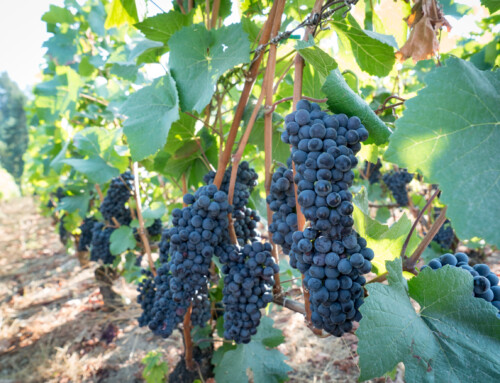Realizing that Pinot noir wine is not usually derived from a single vine but a multitude of differing clones of Pinot, it has become apparent that the Pinot noir wines one acquires from differing geographic areas at times have differing characteristics of flavor, aroma, fragrance and mouthfeel. Thus, Pinot noir reflects the environment of its setting.
To begin with, the numerous clones and grapes that Pinot offers can be grouped or selected in varying ways to demonstrate principles of flavor intensity, color, aromas, astringency, and finish. Because of the varying clones that are often combined to produce Pinot noir, the vines themselves, and the separate clones, are known to reflect the environment in which “they live,” some more intensely than others. So the soil, temperature, humidity, sun exposure, and general weather in California differ from the soil and weather characteristics of Oregon in a variety of ways. These differences are then reflected in the growth of the vines and their spring and summer metabolism that leads to grape production and ultimately to our favorite wines.
California’s Pinot growing areas tend to be relatively dry in summer, and in valleys near the coast, taking advantage of the daytime dry warmth and the inland protected valley temperatures. The proximity to the coast, however, provides evening and nighttime coolness delivered by the incoming coastal fog banks and cool ocean winds. This oscillation of temperatures, hot during the day, cool at night, provides for maximum preservation of fixed acid levels, the important element in a wine’s flavor profile and mouthfeel.
Oregon’s Pinot growing areas are mainly in the Northern portions of the Willamette Valley, alluvial in nature and associated with a river valley. The Northern latitude of these areas is very similar if not identical to some of the enduring Pinot noir growing areas of Northeastern France, and Burgundy, known for the quality of their Pinot wines. These areas, both in Oregon and Burgundy, are wetter during the spring, and colder during the winter, and variably warm during the summer. Consequently, the environment of Oregon Pinot is quite different than the California environment. The Oregon Pinots tend to produce more phenols in the seeds and skin allowing the wine longer aging times and greater mouthfeel, requiring longer maturation time as the phenols coalesce to diminish astringency. The color intensity, from pigments in the skins, tends to be variable depending on the amount of sun exposure during the summer, and the co-pigmentation that develops during barrel maturation, going from ruby red to purple depending on the stability of the pigments.
So although both Oregon and California wines are wonderful examples of the Pinot noir vines, they differ in a variety of both subtle and not so subtle characteristics, all reflective of their geographic environment.



